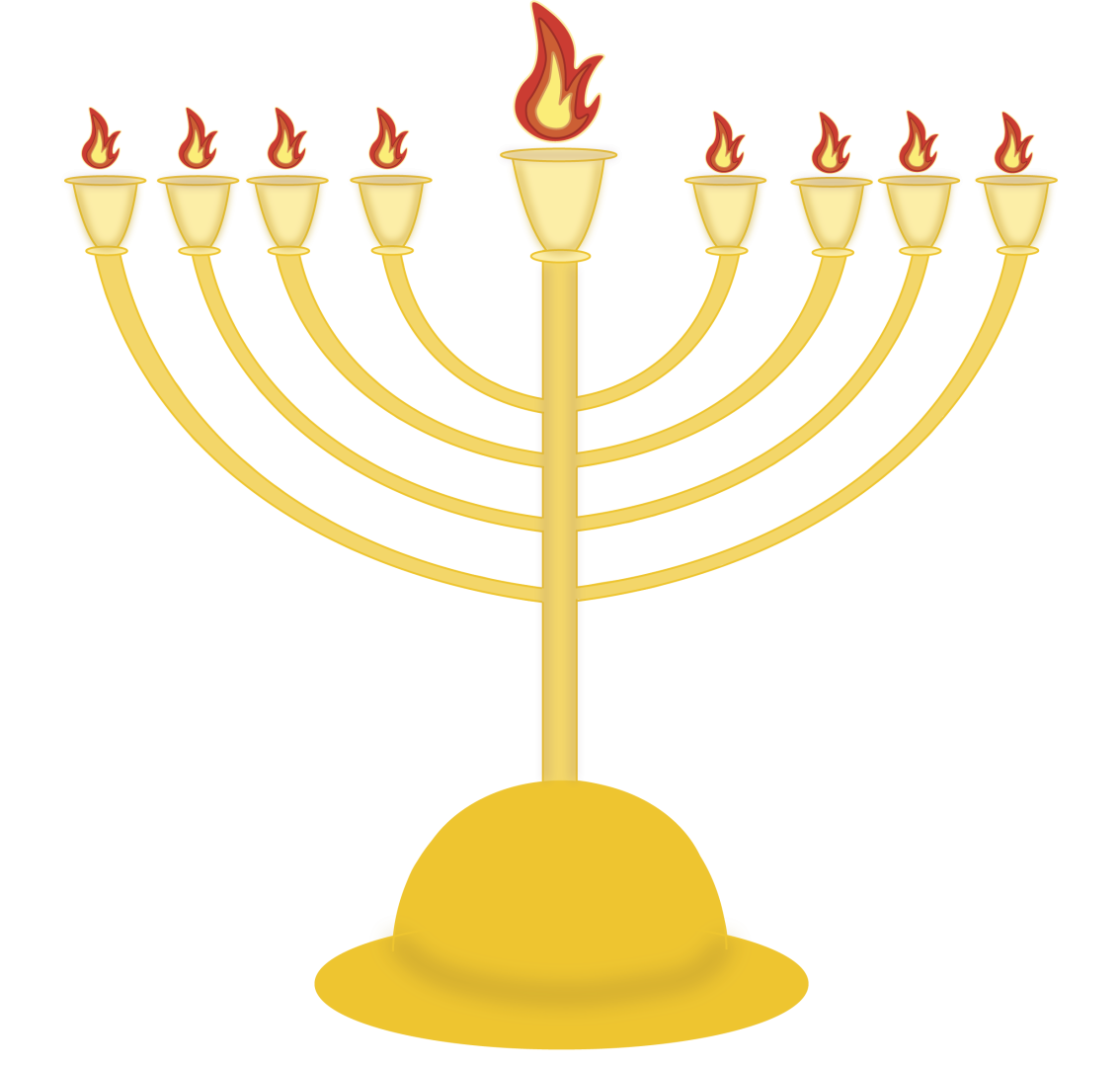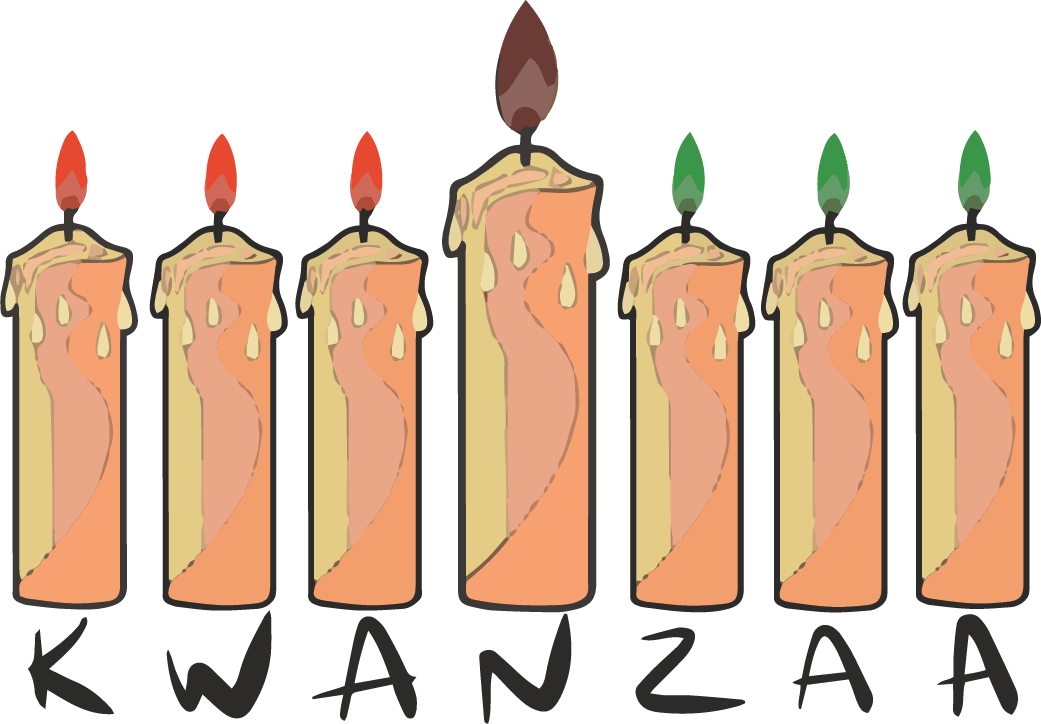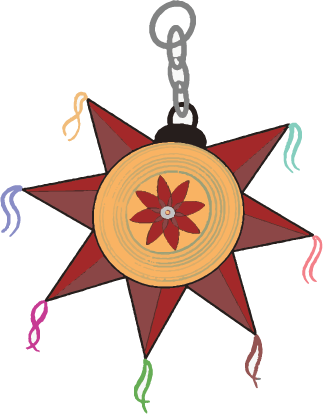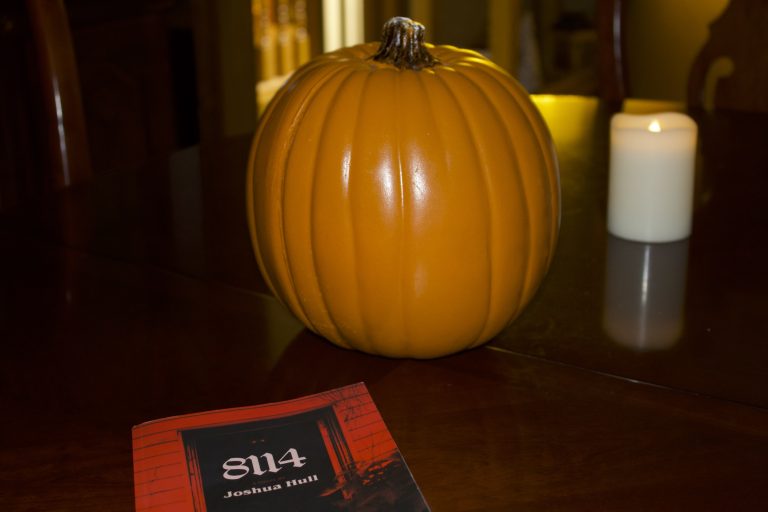Christmas
Gabriel Tice | Staff Writer

Christmas trees, presents, nativities and Santa Claus are all symbols of the Christmas many know and love.
However, most of these customs did not originate in the United States, but are a combination of centuries old spiritual, cultural and commercial celebrations that evolved into the Christmas we celebrate.
The term “Christmas” comes from the Christian celebration of the birth of Jesus that occurred around 2,000 years ago. The term translates to “Christ’s Mass” or “The Mass of Christ.” “Christ” is Jesus and “Mass” is the Catholic term for church service. The tradition spans centuries with the first Christmas Mass recorded in the fourth century. The celebration of Jesus’ birth has historically been celebrated on Dec. 25th, however, the actual date of Jesus’ birth isn’t specifically mentioned in the bible, although the exact date of Jesus’ birth is most likely in late September. The celebration being on Dec. 25 is likely linked to the Roman tradition of the Winter Solstice celebration.
Dec. 25 has long been the celebration of the Winter Solstice, a pagan tradition that marks the end of the darkest days on Earth when the Earth is farthest from the sun. The true origin of Winter Solstice celebrations is hard to trace, but many American Christmas traditions come from these pagan festivals. One such festival comes from Germanic countries: The Yule festival is a winter solstice celebration where the traditions of lighting fires, making ornaments, decorating trees and giving gifts are believed to have stemmed from. As Christianity spread throughout Europe, these pagan traditions found their way into Christian traditions, and it became commonplace to have trees and give gifts during Christmas in England and other predominantly Christian countries. However, these practices did not immediately cross to the New World.
Early Puritan settlers in America viewed Christmas as a sinful, man-made holiday and banned its celebration. As more immigrants came to the U.S. from England and other European countries, Christmas traditions and celebrations became more popular, but it was not until the German immigration boom in the early 1800s when gift-giving and Christmas trees became the norm. Christmas became a federal holiday on June 28, 1870, when U.S. President Ulysses S. Grant signed a bill that also made Independence Day, Thanksgiving Day and New Year’s Day federal holidays. Since then, Christmas only became more popular with gift giving, decorating Christmas trees and celebrating yuletide. The average American spends over $1,000 per year on Christmas, with the nation spending a whopping 800 billion dollars on Christmas in 2021.
Another holiday tradition involves a jolly, fat man in a big red coat known today as Santa Claus. However, the history of Santa is about as complicated as the holiday itself. Modern Santa is a combination of spiritual, cultural, and commercial legends that have formed into the myth we learned as children. The origin of Santa Claus is believed to have been from the 4th century legend of Saint Nicholas of Myra, a man who lived in modern-day Turkey. Not much is known about his life, but the Catholic Church celebrates the feast of St. Nicholas on Dec. 6, his believed death date. The legend of St. Nicholas spread throughout Europe with Christianity. The Dutch took the legend and expanded on it — developing the feast of “Sinterklaas,” where “Sinterklaas” would arrive on a boat and give gifts to good children and coal to bad children. Sinterklaas wore long red bishop robes and had a long white beard. The feast made its way to the United States where Santa Claus became central to Christmas.
One of the first iterations of modern Santa comes from Union propaganda during the American Civil War, where cartoonist Thomas Nast depicts Santa as a small elf-like creature distributing presents to Union Soldiers in a magazine in 1863. He was also one of the first to depict Santa in his iconic sleigh and going down a chimney. After that, Santa’s popularity skyrocketed across the nation, and he quickly became known as the “jolly old elf.” The depiction of a human Santa Claus with a big red coat does not come from a church, a festival, or a political cartoon. It comes from the Coca-Cola company.
According to Coca-Cola’s website, it began using Santa in advertisements in the early 1920’s, who resembled the Nast cartoons from the Civil War. The iconic red coat was born in 1931 when Coca-Cola advertisements began depicting a “friendly, human” Santa enjoying a Coke. These ads were so popular, with Santa still appearing in Coca-Cola ads to this day. He is seen delivering toys, reading letters and resting all while enjoying a cold Coke. Even though Santa was depicted in red hundreds of years before Coke started using his image, Coca-Cola played a major role in the making of the iconic Santa many know and love.
Christmas is a highly complex and beautiful holiday with traditions that have existed for hundreds of years. The next time you wish someone a “Merry Christmas,” know you are practicing a tradition hundreds of years in the making.
Hanukkah
Reagan Sexton-Godsey | Entertainment Editor

A cultural and religious holiday for the Jewish faith, Hanukkah is celebrated to remember a fight to regain religious freedom.
Hanukkah lasts eight nights and begins on the 25th day of Kislev, the ninth month of the Hebrew calendar, according to Royal Museums Greenwich, which can vary in dates between November and December. This year, Hanukkah will begin as the sun sets on Dec. 25 and continues until sundown on Jan. 2.
There are nine candles on the menorah, eight of which represent one day’s worth of oil. The ninth candle is called the “Shamash,” meaning “helper,” which is used to light the other eight candles of the menorah.
“The candles are placed in the menorah from right to left, but are lit from left to right,” and “the blessings are said before the candles are lit,” according to My Jewish Learning. The menorah is then placed in a window so it is visible.On each of the eight nights a candle on the menorah is lit.
“The ancient menorah had seven branches — one for each day of Creation — and it burned in the Temple in what was then Judea, a small area caught in the middle of conflict between the Egyptian empire and the Greek-Assyrian empire,” according to Dartmouth’s website.
Today, there are many traditions people partake in to celebrate the holiday such as lighting the menorah, eating fried foods and playing the dreidel, to name a few.
Playing games with a dreidel is a popular and historic game often associated with Hanukkah, according to the Library of Congress Blogs. On each of the four sides of the Dreidel are words in Hebrew: “Shin” meaning add, “Nun” meaning do nothing, “Gimmel” meaning to take the entire pot and “Hey” meaning to get half the pot, according to My Jewish Learning. To play the game there is a pot used to hold objects such as chocolates, nuts or buttons. According to CBC Kids, each player gets 10 to 15 pieces to play with and takes a turn spinning the dreidel. Each player puts a singular piece into the pot. Whichever side the dreidel lands on determines what the player does.
Some of the foods enjoyed on the holiday include Latkes, brisket, Sufganiyot and more. Latkes, a popular dish, are fried potato pancakes. Sufganiyot is another popular food and is a sweet fried treat similar to a doughnut.
Another tradition coming from Eastern Europe during the nineteenth century is “gelt,” a Yiddish word that translates to money. By the 19th century, Jews in Eastern Europe started giving coins directly to children in their family as Hanukkah gifts, in what was likely an interpretation of the earlier custom. Those who immigrated to America brought the tradition with them, according to History. Today, it is common to give children chocolate gelt packaged in gold wrapping.
While this celebration has a religious background, it has evolved into a cultural holiday for secular Jews, especially in America, as it is not specifically mentioned in the Torah, according to Henry Ford College. It enabled the remembrance of defeating the Greek army that persecuted the Jews, reclaiming the Second Temple of Jerusalem and relighting the menorah, but in modern times has become more of a “Jewish Christmas,” according to the Union for Reform Judaism.
Kwanzaa
Elyssa Merrill | Opinion Editor

While some traditions have been around for generations, Kwanzaa was created within the last century, making it a more recent winter tradition in America.
According to the Afrikan Restoration Project, Kwanzaa is a week-long celebration to reconnect with ancestral traditions, celebrate community and instill values that strengthen cultural identity. Observed annually from Dec. 26 to Jan. 1, it was established in 1966 by Maulana Karenga, a professor and activist for cultural recovery and reconstruction.
The name “Kwanzaa” is derived from the Swahili phrase “matunda ya kwanza,” meaning “first fruits,” which the festival’s roots in African harvest celebrations, according to the African American Cultural Center. However, Kwanzaa is more than an homage to agricultural traditions — it is a deeply symbolic time of reflection and empowerment. Its purpose is to encourage pride in African heritage, strengthen bonds within the African diaspora and promote the values that sustain communities.
At the heart of Kwanzaa are the “Nguzo Saba,” or the Seven Principles, which represent the core values celebrated throughout the week. Each day is dedicated to one principle, beginning with “Umoja,” or unity, which emphasizes the importance of togetherness in family, community and the broader nation. The second day focuses on “Kujichagulia,” or self-determination, which encourages individuals to define and speak for themselves. “Ujima,” celebrated on the third day, highlights collective work and responsibility, underscoring the importance of solving problems together.
This continues through the fourth day with the principle of “Ujamaa,” or cooperative economics, encouraging participants to support and build businesses within their community. The fifth principle, “Nia,” or purpose, calls for individuals to work collectively to develop and sustain the community for the common good. “Kuumba,” or creativity, follows, encouraging individuals to leave the community more beautiful and beneficial than they inherited it. Finally, the celebration concludes with “Imani,” or faith, emphasizing the belief in the community, its people and its potential for success.
In addition to the principles, Kwanzaa is filled with symbols and traditions. Families often display a “kinara,” a seven-candle holder, with three red candles, three green candles and one black candle, each being lit on the respective days. Other elements, such as the “mkeka” (a woven mat symbolizing the foundation of African traditions), the “mazao” (crops representing the fruits of collective labor), and the “kikombe cha umoja” (the unity cup), also play important roles in Kwanzaa ceremonies.
The final day of Kwanzaa often culminates in a communal feast known as “Siku ya Taamuli” since it is the first day of the new year. This joyful gathering brings families and friends together to reflect on the principles, share traditional African and African-American foods and celebrate the achievements of the past year while looking forward to the future. It is a day of meditation and self-reflection.
Kwanzaa’s significance extends far beyond its week of observance. It is a cultural affirmation and a reminder of the resilience, creativity and unity for the African diaspora. By emphasizing shared values and collective progress, Kwanzaa continues to inspire those who celebrate it to strengthen their cultural identity while contributing to the betterment of their communities.
Las Posadas
Barbara Smith | Staff Writer

All around the world, everyone has a different holiday they celebrate. In some parts, it is Christmas, in others it is Hanukkah. But, in Mexico, a festival called Las Posadas is celebrated.
According to Suzanne Barbezat, a licensed tour guide in Mexico, Las Posadas is a Mexican tradition that takes place Dec. 16-24. The word “posada” means “inn” or “shelter” in Spanish, and there can also be something called a “pre-posada,” if people are not available for the main holiday. During these days, the biblical story of Mary and Joseph’s journey to Bethlehem is reenacted. This also involves a special song, a variety of other carols and breaking piñatas. According to Barbezat, posadas are held in local communities each night and are becoming more popular in America.
A posada begins with a group of people, sometimes playing the parts of Mary and Joseph, singing a special song called La Canción Para Pedir Posada. In the first part, Joseph asks the innkeeper for a place to stay, and the second part is the innkeeper saying they have no more room. According to Franscian Media, this group goes to multiple houses before the ‘innkeeper’ agrees to let them into the designated house. Once inside the home, the celebration begins.
While it can vary from a fancy party to a small get together, posadas begin with a bible reading and prayer. After that, food is brought to the guests, which is traditionally tamales and a hot drink such as “ponche” or “atole,” and then a piñata is brought out to distribute candy.
However, this does not happen all at one place. Each night, those celebrating go to a different house and repeat the process. Each house represents a different quality — humility, strength, detachment, charity, trust, justice, purity, joy and generosity. Each night leading to Dec. 25 represents the nine months that Jesus spent in Mary’s womb, or, to represent a nine day journey, it can represent Mary and Joseph going from Nazareth to Bethlehem.
Las Posadas, according to Wonderopolis, originated in colonial Mexico in 1586 by the Augustinian friars. What started this was when Friar Diego de Soria obtained a papal bull from a pope and they celebrated what was called misas de aguinaldo. The posadas were originally held in the church, but they gradually made their way into neighborhoods and Las Posadas would ultimately become what it is today.
According to an article by The Catholic Review, on the last night of Las Posadas, the families prepare the Christmas crib in a scene much like the Nativity sets with which we’re all familiar. In some areas, it’s customary to include Holy Mass as part of the procession. After the Mass and procession, refreshments are served, including an array of ethnic dishes, and families enjoy a meal and more singing together before the night’s end.
Blogger Carlos Villamayor mentions how this tradition spread to other countries including Colombia, Venezuela, Ecuador, and Guatemala.
Las Posadas is not a global tradition, but it is one that’s been celebrated since the 16th century and has made an impact on the Mexican culture we know today.
Krampus
Emma Foutz | Editorial Assistant

Naughty children get coal for Christmas in the United States, but in the Alpine regions of Europe, they are punished or taken by Krampus, the holiday half-goat-half-demon.
The legend of Krampus is believed to originate from Germany, stemming from Pagan rituals for the winter solstice, according to Britannica. The name derives from the German word “krampen,” meaning claw. When Christianity began to spread throughout Europe, Krampus became associated with the Christmas tradition as a foil to Saint Nicholas to encourage good behavior from children.
Krampus is depicted as a sinister creature, part goat and part demon, with jagged black fur, large claws, curved horns and a serpentine tongue. He wears chains and bells (the jingle leads children into a false sense of security, sounding like Saint Nicholas), accompanied by bundles of birch branches and a sack over his shoulder. The terror-inducing appearance directly contrasts Saint Nicholas, a warm and friendly figure dressed in a bishop’s robes.
Krampus and Saint Nicholas are said to visit homes on the night of Dec. 5. According to Smithsonian Magazine, while Saint Nicholas delivers presents and toys to good children, Krampus beats the misbehaving children with birch branches. Legend says that severely naughty children could disappear and be taken to Krampus’ lair to be tortured and eaten. There is a misconception that Krampus replaces Saint Nicholas, but they are two different beings working together. It’s an interesting co-worker relationship.
There are many longstanding traditions surrounding Krampus, according to History.com. “Krampusnacht,” or Krampus night, the night before Saint Nicholas Day. “Krampuslauf,” or Krampus run, is an Austrian tradition where men wear Krampus costumes, get intoxicated and run through the streets with bells, whips and theatrical scares. Other Alpine traditions incorporate Krampus into holiday festivities like parades and plays. These traditions are meant to thrill and terrify while honoring the region’s folklore.
In the 1890s, postcards hit peak popularity in Germany and Austria, and the “Krampuskarten” were not the typical greeting card. These vintage postcards often had “Greetings from Krampus!” and depicted Krampus punishing children, but some modern iterations range from grotesque to humorous in their designs.
While Krampus is a longstanding tradition in European countries, his devilish persona made its way into American pop culture over the years. Films like Krampus (2015) and episodes of shows like American Dad! and The Office have introduced the character to wider audiences, often blending horror and comedy.
Krampus has evolved from a regional legend to a worldwide phenomenon. His dark and mischievous nature appeals to those who enjoy the macabre and is the counterbalance to the cheeriness of modern Christmas celebrations, while providing lessons on morality and community.
La Befana
Livia Lytle | Business Manager

While Italy shares similar Christmas traditions to the U.S., one of the most notable differences is La Befana, a bearer of gifts in the form of a grandmotherly woman.
In Italy, Christmas celebrations begin Dec. 8 with the Feast of Immaculate Conception and conclude on Jan. 6 with Epiphany Day. While Christmas is still celebrated on Dec. 25 in a similar fashion to the U.S., Italy celebrates additional holidays throughout the season as well.
Dec. 26 is also a national holiday in Italy known as Saint Stephen’s Day and is typically celebrated by attending markets, carnivals or festivals and visiting Nativity scenes at churches, according to Italy Magazine. The tradition of the Nativity originated in Greccio, Italy in 1223 with a live-action, dramatized version and is attributed to Saint Francis of Assisi, according to Smithsonian Magazine.
While Epiphany Day is celebrated throughout the entire nation of Italy, the gift giving and the folklore of La Befana is most common within central Italy. Urbania, a municipality located in the Italian region of Marche, Italy, is often said to be the official home of La Befana, according to Walks of Italy.
Befana is most often depicted as a broom-riding, good witch who appears as an elderly woman wrapped in a shawl. She is also typically covered in soot, due to her entering through the chimney. According to legend, Befana’s story became interweaved with that of the Three Kings — or the Three Magi — when she allowed them shelter in her home during their journey to the birth of Jesus while following the Star of Bethlehem. They offered for Befana to accompany them on their journey, and she initially declined. After the Kings left in the morning, Befana changed her decision and tried but failed to catch up to them, carrying her broom along with a small basket of gifts for the baby Jesus. Thus began the legend of the gift-bearer, La Befana, according to ItaliaRail.
The tradition of gift giving is celebrated in Italy much like in the U.S. but can take place on Christmas Eve or Christmas Day depending on the region. The tradition of Santa Claus, called “Babbo Natale” in Italy, is the same in some regions, while other regions follow the older tradition of Baby Jesus or the Christ Child being the bearer of gifts, according to Select Italy. In some areas of Northern Italy, it is more common for gifts to be given earlier on Dec. 13, which is Saint Lucy’s Day. In areas of central Italy it is more common for gifts to be given later, on Epiphany Day.
The legend says that Befana is still on her journey in search of the baby Jesus and delivers treats — normally toys and candy — to the good children and leaves behind coal for the bad children, much like the Santa Claus. In addition to coal, Befana will sometimes leave onions, garlic or straw from her broom, according to ItaliaRail.
The biggest La Befana festival takes place in her official home and origin of Urbania, Italy. The large celebration, which features activities like singing, dancing and juggling, and hundreds of Befana-impersonators handing out sweets, brings around 30,000 to 50,000 people to the area, according to ItaliaRail.
Bada Din
Pete Roeger | Distribution Manager

“Bada Din,” meaning “Big Day,” is a term used to refer to Christmas in India.
According to Little Passports, Greaves India Tours and Wendy Wu Tours, Christmas, while being a Christian holiday, is celebrated by both Christians in India as a religious holiday as well as by Indians of other faiths as a secular festivity. However, religious observances are a minority, as most of India’s population is Hindu, and Christmas is generally a Christian holiday when celebrated religiously.
In some parts of southern India, such as Kerala, where there is a larger Christian population, many communities participate in Midnight Mass celebrations. These festive services take place in brightly glowing churches adorned with candles and flowers. Some people decorate rooftops with flowers and fairy lights while mango trees are donned in festive ornaments. Some Christian families in southern India place small clay oil-burning lamps, called diyas, in their homes, which symbolizes the Christian belief in the presence of Jesus as the “Light of the World.”
According to the Times of India, the city of Kochi, in the southern Indian state of Kerala, celebrates Christmas every year with a large festival called the Cochin Carnival. The festival dates to the Portuguese New Year’s celebration in colonial times, and today features a vibrant mix of Kerala’s culture. The celebration begins with a grand parade through Fort Kochi, including decorated elephants, ornate floats and traditional art. The festival includes a grand firework display that illuminates the night sky over Fort Kochi. The merriment continues daily for a whole week, stretching from Dec. 25 until the New Year on Jan. 1.
Food is also an important part of Bada Din. Some communities feature stalls selling traditional Indian dishes like biryani and curry. Some people also make kheer, a pudding-like dessert, often made with rice and sometimes including nuts and raisins.
According to the Greaves article, Santa Claus is known by different names in India, including Christmas Baba, Christmas Taathaa or Natal Bua. Overall, India celebrates Christmas in a variety of ways that are both traditionally festive and uniquely Indian.







